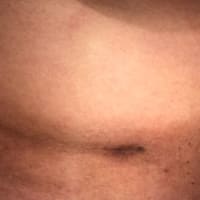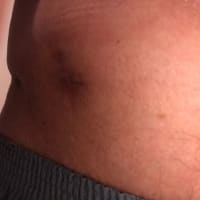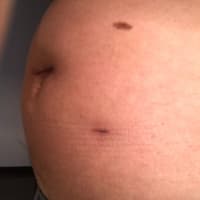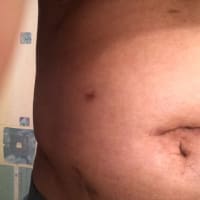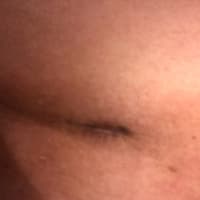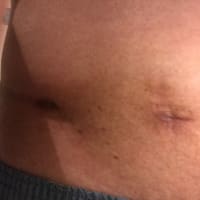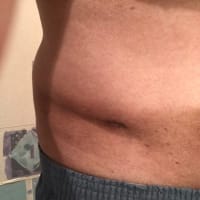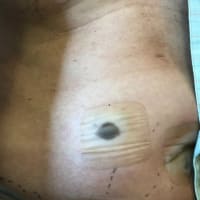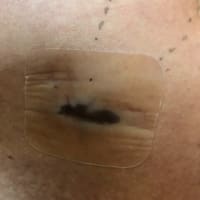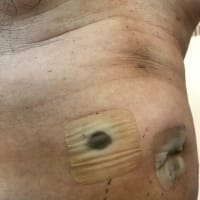
(添付はスコリオメーターを示しています。本文とは直接関係ありません)
引き続き米国のカイロプラクティック協会からの情報として下記の記事を和訳して
みました。和訳にあたり意訳した部分もあります。また多少ミスもあるかもしれま
せんが、大意として合致していると思います。
内容は、すでにこのブログ内でも何度となく繰り返してきている現代医学における
特発性側弯症に対する見解/説明となんら変わるものではありません。
その意味では、新しい情報を期待される方には得るものはありません。
しかし、重要なのは、米国においては、業界団体がこのように、ネット上で
カイロプラクティック業界として
「カイロの手法/マニュピレーションは特発性側弯症の治療に効果を持つことは
証明されていない」ということを正直に述べていることです。
これは、カイロプラクティックの限界を述べているというよりも、
(残念な事実ですが)特発性側弯症の原因がいまだに不明であることによる
その事実をカイロプラクティックも認識しています、ということを表明して
いるのであって、この記事内にも記載がありますが、腰痛等の緩和、軽減に
カイロプラクティックが効果を持つことには変わりはないと思います。
私august03は全ての民間療法者を否定しているのではありません。
患者の弱いこころ、わらにもすがる思いでいる患者さんやその母親の気持ちを
利用して、特発性側弯症をビジネスに利用している民間療法者に抗議を述べ
続けているものです。
ここに記載されているように、カイロプラクティックにできることもあれば
当然、できないこともあります。医学にもとづいて事実を患者さんに開示する
こと、それが大切なのであり、その意味で、この記事を好ましく感じました。
If someone who claim having right to translate this article,
Please feel free to contact august03 by Email.
I, august03 has no intention to infringe his/her right.
http://www.spineuniverse.com/displayarticle.php/article749.html
Scoliosis: Patient Information from the American Chiropractic Association
側弯症 : 患者ガイド (米国カイロプラクティック協会)
Nataliya Schetchikova, PhD
Editor
米国内での側湾症患者は500万~700万人いると言われています。毎年50万人以上の
患者さんが整形外科医のもとを訪れ診察、そして治療しています。
測弯症はいずれの年代においても発症しうるものですが、もっとも比率が高いのは
10歳~15歳の思春期に発症する特発性側弯症です。女子のほうが男子よりも比率が
高くなります。そくわん症は系統的傾向が見られるので、両親あるいは兄弟姉妹が側弯
症であるこどもは専門医師による精密な検査を受けることが大切です。
側弯症とは何か?
我々は二本足歩行をするので、ヒトの神経システムはつねに反射神経として働いて
おり、左右歩行で脊椎が垂直であるように姿勢をコントロールしている。ときには
彎曲が発生することもある。もし彎曲が10度以上になった場合、側弯症と呼ばれています。
カーブが10度以下の場合は、単に姿勢による変化であることが多い。側湾症はまた
前弯や後弯を伴うことがあります。多くの場合、椎体もまたねじれている。
測弯症のうち80%以上は原因不明です。これを特発性側弯症と呼んでいます。
他のものとしては、外傷性、神経原性、腫瘍や代謝性(機能性)の場合があります。
機能性側弯症の場合はしばしば姿勢の問題や、筋肉のこり、下肢の脚長差などが
原因となります。構築性側弯症(特発性側弯症等)の場合は、姿勢を矯正しても角度
は減少しません。
側弯症の症候はどういうものか?
側弯症は活動性を制限されるために生活の質(QOL)に非常に影響を与えます。また
患者によっては痛みを覚えることもあり、また肺機能や心機能の低下が見られます
側弯症は多くの場合、思春期のティーンエイジにおいて発症するので、容姿に対す
る劣等感やその他の心理的問題もありがちとなります。
幸いにも、側弯症患者の5人中4人は20度以下のカーブであることから、専門家以外
には判断がつきません。このような小さなカーブでは大きな心配をすることはなく
それ以上進行することもほとんどありません。しかし、成長期にあるこどもや、
思春期のこどもで、数ヶ月で10度以上も進行することがあります。従って、この
年代のこどもたちは、頻回に専門医師による診察が必要となります。
側弯症はどのように診断するのか?
診断は、病歴と身体への検査から始まります。もし側弯症性カーブが見られた場合
は、さらに精密な検査を行います。これには、先天性欠損や傷害やその他構築性
カーブの原因となりうるものがないか等を調べることも含みます。
脊柱カーブを有する患者にはレントゲン撮影を行い、側弯の場所と重篤性などを
判断することになり、また側弯により影響を受けているかもしれない内臓器の状態
なども検査することになります。
さらに、手首をレントゲン撮影することもあります。これは患者の骨成熟度がどの
程度であるかを判断する材料となり、標準値と比較して、さらに進行が早いかどう
かなどを判断するのに役立てます。側弯の重篤性により、3~4ヶ月ごとにレントゲ
ン撮影をすることもあれば、数年に一度ということもあります。
その他のテストとして、スコリオメーターにより計測なども行われるかもしれませ
ん。これはリブハンプの大きさ、角度を測定するためのメジャーです。
すべての側弯症は進行するのか?
一般的に、それは事実ではありません。実際、大半の患者さんで側弯はマイルド
カーブであり、急激に進行することはありません。
しかし、患者さんによっては急激に進行する場合もあります。25度以上の女子で
まだ初潮前の場合はそのリスクがあります。女子は、初潮がはじまる一年ほど前に
身長が大きく伸びる時期があり、その時期と側弯症発症が重なると急激な進行が
起こりがちです。初潮がすでにきている場合は、その進行スピードも緩やかなもの
になりがちです。
側弯症はどう治療するのか?
側弯症治療には3つのオプションがあります。「注意深く観察している時期」
「装具」そして「手術」です。大半の患者さんはマイルドカーブであり、進行する
のはまれなので、おおくは「経過観察処置」となります。
装具は骨成熟に達しておらず、25度~45度ほどのカーブの場合に行われます。
手術にいたるケースは非常に数が少ないのですが、カーブが45度を超えて、さらに
進行することが予想される場合は、その側弯が心臓や肺や他の臓器に悪影響を与え
ることが考えられるために行うことになります。
運動/体操は側弯症治療に効果はあるのか?
脊椎へのマニュピレーション、体操、そして電気刺激が側弯治療に有効かどうか
が議論されてきました。これらが側弯カーブを減少させたという証拠は示されて
いしません。増悪させたという証拠もありません。側弯が影響して腰痛がある場合
は、マニュピレーションや体操によりその腰痛を軽減することはあるかもしれません。
大半の側弯症患者は普通の、幸福で生産的な生活を送っています。
運動を含め、身体を動かすことは心臓機能を高めるので、多くの場合推奨されています。
Healthy Living, September/October 2006
この患者ガイドはアメリカンカイロプラクティック協会のジャーナルサービスとし
て作成されました。ここに記載した内容は多くの場合に適正に当てはまると考え
ますが、しかし、専門家による診断の代わりになるものではありません。
あなた自身の健康については、専門家に診てもらう必要があります。
上記記載内容は、カイロプラクターあるいは他の患者を教育する専門家によって
無償で転用されることがありえます。それ以外での転載にはACAの許可を必要と
します。
....................................................................
(注意: 正しくは「側弯症」と書きますが、ここでは測わん、側湾という表記
もあえて用いています。august03)
Scoliosis affects 5 to 7 million people in the United States. More than a half million visits are made to doctors' offices each year for evaluation and treatment of scoliosis. Although scoliosis can begin at any age, it most often develops in adolescents between the ages of 10 and 15. Girls are more commonly affected than boys. Because scoliosis can be inherited, children whose parents or siblings are affected by it should definitely be evaluated by a trained professional.
What is scoliosis?
Because we walk on 2 feet, the human nervous system constantly works through reflexes and postural control to keep our spine in a straight line from side to side. Occasionally, a lateral (sideways) curvature develops. If the curvature is larger than 10 degrees, it is called scoliosis.
Curves less than 10 degrees are often just postural changes. Scoliosis can also be accompanied by lordosis (abnormal curvature toward the front) or kyphosis (abnormal curvature toward the back). In most cases, the vertebrae are also rotated.
In more than 80% of cases, the cause of scoliotic curvatures is unknown; we call this condition idiopathic scoliosis. In other cases, trauma, neurological disease, tumors, and the like are responsible. Functional scoliosis is often caused by some postural problem, muscle spasm, or leg-length inequality, which can often be addressed. Structural scoliosis does not reduce with postural maneuvers. Either type can be idiopathic or have an underlying cause.
What are the symptoms of scoliosis?
Scoliosis can significantly affect the quality of life by limiting activity, causing pain, reducing lung function, or affecting heart function. Diminished self-esteem and other psychological problems are also seen. Because scoliosis occurs most commonly during adolescence, teens with extreme spinal deviations from the norm are often teased by their peers.
Fortunately, 4 out of 5 people with scoliosis have curves of less than 20 degrees, which are usually not detectable to the untrained eye. These small curves are typically no cause for great concern, provided there are no signs of further progression. In growing children and adolescents, however, mild curvatures can worsen quite rapidly-by 10 degrees or more-in a few months. Therefore, frequent checkups are often necessary for this age group.
How is scoliosis evaluated?
Evaluation begins with a thorough history and physical examination, including postural analysis. If a scoliotic curvature is discovered, a more in-depth evaluation is needed. This might include a search for birth defects, trauma, and other factors that can cause structural curves.
Patients with substantial spinal curvatures very often require an x-ray evaluation of the spine. The procedure helps determine the location and magnitude of the scoliosis, along with an underlying cause not evident on physical examination, other associated curvatures, and the health of other organ systems that might be affected by the scoliosis.
In addition, x-rays of the wrist are often performed. These films help determine the skeletal age of the person, to see if it matches an accepted standard, which helps the doctor determine the likelihood of progression. Depending on the scoliosis severity, x-rays may need to be repeated as often as every 3 to 4 months to as little as once every few years.
Is scoliosis always progressive?
Generally, it is not. In fact, the vast majority of scolioses remains mild, is not progressive, and requires little treatment, if any.
Other tests, including evaluation by a Scoliometer™, might also be ordered by the doctor. This device measures the size, by angle, of the rib hump associated with the scoliosis. It is non-invasive, painless, and requires no special procedures. A Scoliometer™ is best used as a guide concerning progression in a person with a known scoliosis-not as a screening device.
In one group of patients, however, scoliosis is often more progressive. This group is made up of young girls who have scolioses of 25 degrees or larger, but who have not yet had their first menstrual period. Girls generally grow quite quickly during the 12 months before their first period and if they have scolioses, the curvatures tend to progress rapidly. In girls who have already had their first periods, the rate of growth is slower, so their curves tend to progress more slowly.
What is the treatment for scoliosis?
There are generally 3 treatment options for scoliosis- careful observation, bracing, and surgery. Careful observation is the most common "treatment," as most mild scolioses do not progress and cause few, if any, physical problems.
Bracing is generally reserved for children who have not reached skeletal maturity (the time when the skeleton stops growing), and who have curves between 25 and 45 degrees.
Surgery is generally used in the few cases where the curves are greater than 45 degrees and progressive, and/or when the scoliosis may affect the function of the heart, lungs, or other vital organs.
therapeutic exercise may help in the treatment of scoliosis
Spinal manipulation, therapeutic exercise, and electrical muscle stimulation have also been advocated in the treatment of scoliosis. None of these therapies alone has been shown to consistently reduce scoliosis or to make the curvatures worse. For patients with back pain along with the scoliosis, manipulation and exercise may be of help.
Most people with scoliosis lead normal, happy, and productive lives. Physical activity including exercise is generally well-tolerated and should be encouraged in most cases.
引き続き米国のカイロプラクティック協会からの情報として下記の記事を和訳して
みました。和訳にあたり意訳した部分もあります。また多少ミスもあるかもしれま
せんが、大意として合致していると思います。
内容は、すでにこのブログ内でも何度となく繰り返してきている現代医学における
特発性側弯症に対する見解/説明となんら変わるものではありません。
その意味では、新しい情報を期待される方には得るものはありません。
しかし、重要なのは、米国においては、業界団体がこのように、ネット上で
カイロプラクティック業界として
「カイロの手法/マニュピレーションは特発性側弯症の治療に効果を持つことは
証明されていない」ということを正直に述べていることです。
これは、カイロプラクティックの限界を述べているというよりも、
(残念な事実ですが)特発性側弯症の原因がいまだに不明であることによる
その事実をカイロプラクティックも認識しています、ということを表明して
いるのであって、この記事内にも記載がありますが、腰痛等の緩和、軽減に
カイロプラクティックが効果を持つことには変わりはないと思います。
私august03は全ての民間療法者を否定しているのではありません。
患者の弱いこころ、わらにもすがる思いでいる患者さんやその母親の気持ちを
利用して、特発性側弯症をビジネスに利用している民間療法者に抗議を述べ
続けているものです。
ここに記載されているように、カイロプラクティックにできることもあれば
当然、できないこともあります。医学にもとづいて事実を患者さんに開示する
こと、それが大切なのであり、その意味で、この記事を好ましく感じました。
If someone who claim having right to translate this article,
Please feel free to contact august03 by Email.
I, august03 has no intention to infringe his/her right.
http://www.spineuniverse.com/displayarticle.php/article749.html
Scoliosis: Patient Information from the American Chiropractic Association
側弯症 : 患者ガイド (米国カイロプラクティック協会)
Nataliya Schetchikova, PhD
Editor
米国内での側湾症患者は500万~700万人いると言われています。毎年50万人以上の
患者さんが整形外科医のもとを訪れ診察、そして治療しています。
測弯症はいずれの年代においても発症しうるものですが、もっとも比率が高いのは
10歳~15歳の思春期に発症する特発性側弯症です。女子のほうが男子よりも比率が
高くなります。そくわん症は系統的傾向が見られるので、両親あるいは兄弟姉妹が側弯
症であるこどもは専門医師による精密な検査を受けることが大切です。
側弯症とは何か?
我々は二本足歩行をするので、ヒトの神経システムはつねに反射神経として働いて
おり、左右歩行で脊椎が垂直であるように姿勢をコントロールしている。ときには
彎曲が発生することもある。もし彎曲が10度以上になった場合、側弯症と呼ばれています。
カーブが10度以下の場合は、単に姿勢による変化であることが多い。側湾症はまた
前弯や後弯を伴うことがあります。多くの場合、椎体もまたねじれている。
測弯症のうち80%以上は原因不明です。これを特発性側弯症と呼んでいます。
他のものとしては、外傷性、神経原性、腫瘍や代謝性(機能性)の場合があります。
機能性側弯症の場合はしばしば姿勢の問題や、筋肉のこり、下肢の脚長差などが
原因となります。構築性側弯症(特発性側弯症等)の場合は、姿勢を矯正しても角度
は減少しません。
側弯症の症候はどういうものか?
側弯症は活動性を制限されるために生活の質(QOL)に非常に影響を与えます。また
患者によっては痛みを覚えることもあり、また肺機能や心機能の低下が見られます
側弯症は多くの場合、思春期のティーンエイジにおいて発症するので、容姿に対す
る劣等感やその他の心理的問題もありがちとなります。
幸いにも、側弯症患者の5人中4人は20度以下のカーブであることから、専門家以外
には判断がつきません。このような小さなカーブでは大きな心配をすることはなく
それ以上進行することもほとんどありません。しかし、成長期にあるこどもや、
思春期のこどもで、数ヶ月で10度以上も進行することがあります。従って、この
年代のこどもたちは、頻回に専門医師による診察が必要となります。
側弯症はどのように診断するのか?
診断は、病歴と身体への検査から始まります。もし側弯症性カーブが見られた場合
は、さらに精密な検査を行います。これには、先天性欠損や傷害やその他構築性
カーブの原因となりうるものがないか等を調べることも含みます。
脊柱カーブを有する患者にはレントゲン撮影を行い、側弯の場所と重篤性などを
判断することになり、また側弯により影響を受けているかもしれない内臓器の状態
なども検査することになります。
さらに、手首をレントゲン撮影することもあります。これは患者の骨成熟度がどの
程度であるかを判断する材料となり、標準値と比較して、さらに進行が早いかどう
かなどを判断するのに役立てます。側弯の重篤性により、3~4ヶ月ごとにレントゲ
ン撮影をすることもあれば、数年に一度ということもあります。
その他のテストとして、スコリオメーターにより計測なども行われるかもしれませ
ん。これはリブハンプの大きさ、角度を測定するためのメジャーです。
すべての側弯症は進行するのか?
一般的に、それは事実ではありません。実際、大半の患者さんで側弯はマイルド
カーブであり、急激に進行することはありません。
しかし、患者さんによっては急激に進行する場合もあります。25度以上の女子で
まだ初潮前の場合はそのリスクがあります。女子は、初潮がはじまる一年ほど前に
身長が大きく伸びる時期があり、その時期と側弯症発症が重なると急激な進行が
起こりがちです。初潮がすでにきている場合は、その進行スピードも緩やかなもの
になりがちです。
側弯症はどう治療するのか?
側弯症治療には3つのオプションがあります。「注意深く観察している時期」
「装具」そして「手術」です。大半の患者さんはマイルドカーブであり、進行する
のはまれなので、おおくは「経過観察処置」となります。
装具は骨成熟に達しておらず、25度~45度ほどのカーブの場合に行われます。
手術にいたるケースは非常に数が少ないのですが、カーブが45度を超えて、さらに
進行することが予想される場合は、その側弯が心臓や肺や他の臓器に悪影響を与え
ることが考えられるために行うことになります。
運動/体操は側弯症治療に効果はあるのか?
脊椎へのマニュピレーション、体操、そして電気刺激が側弯治療に有効かどうか
が議論されてきました。これらが側弯カーブを減少させたという証拠は示されて
いしません。増悪させたという証拠もありません。側弯が影響して腰痛がある場合
は、マニュピレーションや体操によりその腰痛を軽減することはあるかもしれません。
大半の側弯症患者は普通の、幸福で生産的な生活を送っています。
運動を含め、身体を動かすことは心臓機能を高めるので、多くの場合推奨されています。
Healthy Living, September/October 2006
この患者ガイドはアメリカンカイロプラクティック協会のジャーナルサービスとし
て作成されました。ここに記載した内容は多くの場合に適正に当てはまると考え
ますが、しかし、専門家による診断の代わりになるものではありません。
あなた自身の健康については、専門家に診てもらう必要があります。
上記記載内容は、カイロプラクターあるいは他の患者を教育する専門家によって
無償で転用されることがありえます。それ以外での転載にはACAの許可を必要と
します。
....................................................................
(注意: 正しくは「側弯症」と書きますが、ここでは測わん、側湾という表記
もあえて用いています。august03)
Scoliosis affects 5 to 7 million people in the United States. More than a half million visits are made to doctors' offices each year for evaluation and treatment of scoliosis. Although scoliosis can begin at any age, it most often develops in adolescents between the ages of 10 and 15. Girls are more commonly affected than boys. Because scoliosis can be inherited, children whose parents or siblings are affected by it should definitely be evaluated by a trained professional.
What is scoliosis?
Because we walk on 2 feet, the human nervous system constantly works through reflexes and postural control to keep our spine in a straight line from side to side. Occasionally, a lateral (sideways) curvature develops. If the curvature is larger than 10 degrees, it is called scoliosis.
Curves less than 10 degrees are often just postural changes. Scoliosis can also be accompanied by lordosis (abnormal curvature toward the front) or kyphosis (abnormal curvature toward the back). In most cases, the vertebrae are also rotated.
In more than 80% of cases, the cause of scoliotic curvatures is unknown; we call this condition idiopathic scoliosis. In other cases, trauma, neurological disease, tumors, and the like are responsible. Functional scoliosis is often caused by some postural problem, muscle spasm, or leg-length inequality, which can often be addressed. Structural scoliosis does not reduce with postural maneuvers. Either type can be idiopathic or have an underlying cause.
What are the symptoms of scoliosis?
Scoliosis can significantly affect the quality of life by limiting activity, causing pain, reducing lung function, or affecting heart function. Diminished self-esteem and other psychological problems are also seen. Because scoliosis occurs most commonly during adolescence, teens with extreme spinal deviations from the norm are often teased by their peers.
Fortunately, 4 out of 5 people with scoliosis have curves of less than 20 degrees, which are usually not detectable to the untrained eye. These small curves are typically no cause for great concern, provided there are no signs of further progression. In growing children and adolescents, however, mild curvatures can worsen quite rapidly-by 10 degrees or more-in a few months. Therefore, frequent checkups are often necessary for this age group.
How is scoliosis evaluated?
Evaluation begins with a thorough history and physical examination, including postural analysis. If a scoliotic curvature is discovered, a more in-depth evaluation is needed. This might include a search for birth defects, trauma, and other factors that can cause structural curves.
Patients with substantial spinal curvatures very often require an x-ray evaluation of the spine. The procedure helps determine the location and magnitude of the scoliosis, along with an underlying cause not evident on physical examination, other associated curvatures, and the health of other organ systems that might be affected by the scoliosis.
In addition, x-rays of the wrist are often performed. These films help determine the skeletal age of the person, to see if it matches an accepted standard, which helps the doctor determine the likelihood of progression. Depending on the scoliosis severity, x-rays may need to be repeated as often as every 3 to 4 months to as little as once every few years.
Is scoliosis always progressive?
Generally, it is not. In fact, the vast majority of scolioses remains mild, is not progressive, and requires little treatment, if any.
Other tests, including evaluation by a Scoliometer™, might also be ordered by the doctor. This device measures the size, by angle, of the rib hump associated with the scoliosis. It is non-invasive, painless, and requires no special procedures. A Scoliometer™ is best used as a guide concerning progression in a person with a known scoliosis-not as a screening device.
In one group of patients, however, scoliosis is often more progressive. This group is made up of young girls who have scolioses of 25 degrees or larger, but who have not yet had their first menstrual period. Girls generally grow quite quickly during the 12 months before their first period and if they have scolioses, the curvatures tend to progress rapidly. In girls who have already had their first periods, the rate of growth is slower, so their curves tend to progress more slowly.
What is the treatment for scoliosis?
There are generally 3 treatment options for scoliosis- careful observation, bracing, and surgery. Careful observation is the most common "treatment," as most mild scolioses do not progress and cause few, if any, physical problems.
Bracing is generally reserved for children who have not reached skeletal maturity (the time when the skeleton stops growing), and who have curves between 25 and 45 degrees.
Surgery is generally used in the few cases where the curves are greater than 45 degrees and progressive, and/or when the scoliosis may affect the function of the heart, lungs, or other vital organs.
therapeutic exercise may help in the treatment of scoliosis
Spinal manipulation, therapeutic exercise, and electrical muscle stimulation have also been advocated in the treatment of scoliosis. None of these therapies alone has been shown to consistently reduce scoliosis or to make the curvatures worse. For patients with back pain along with the scoliosis, manipulation and exercise may be of help.
Most people with scoliosis lead normal, happy, and productive lives. Physical activity including exercise is generally well-tolerated and should be encouraged in most cases.












